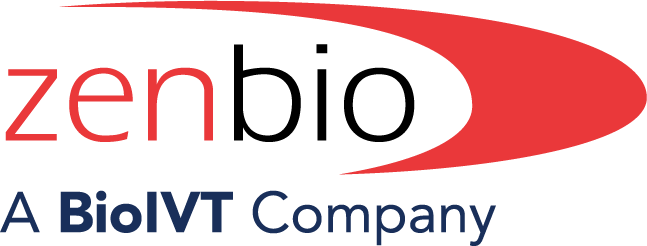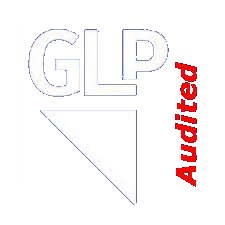Total Antioxidant Activity Screening
Free radicals and reactive oxygen species (ROS) are highly reactive molecules that are generated by normal cellular processes, environmental stresses, and UV irradiation. ROS react with cellular components, damaging DNA, carbohydrates, proteins, and lipids causing cellular and tissue injury. Excess production of reactive oxygen species can also lead to inflammation, premature aging disorders, and several disease states, including cancer, diabetes, and atherosclerosis. Organisms have developed complex antioxidant systems to protect themselves from oxidative stress, however, excess ROS can overwhelm the systems and cause severe damage.
Zen-Bio offers several in vitro and cell-based screening methods for evaluating the total antioxidant activity of compounds or extracts. These assays can determine the total antioxidant capacity of biological fluids, cells, tissue, and naturally occurring or synthetic compounds for use as dietary supplements, topical protection, and therapeutics.
In Vitro Antioxidant Assays
- ABTS or TEAC (Trolox Equivalent Antioxidant Capacity) Assays
offers two ABTS Antioxidant Assays, the original assay and the activated ABTS assay. The original ABTS assay measures ABTS radical cation formation induced by metmyoglobin and hydrogen peroxide. Test samples are added during the radical cation formation reaction and can inhibit multiple steps in this reaction. The Activated ABTS assay simplifies the test by generating the highly colored ABTS radical cation prior to testing samples for their antioxidant activity. Trolox, a water soluble vitamin E analog, serves as a positive control in both assays inhibiting the formation of or reducing the pre-formed radical cation in a dose dependent manner. - ORAC Antioxidant Assay

The ORAC (Oxygen Radical Absorbance Capacity) Antioxidant assay measures the loss of fluorescein fluorescence over time due to peroxyl-radical formation by the breakdown of AAPH (2,2'-azobis-2-methyl-propanimidamide, dihydrochloride). Trolox, a water soluble vitamin E analog, serves as a positive control inhibiting fluorescein decay in a dose dependent manner. The ORAC assay is a kinetic assay measuring fluroescein decay and antioxidant protection over time. - HORAC Antioxidant Assay
HORAC (Hydroxyl Radical Absorbance Capacity) Antioxidant assay measures the loss of fluorescein fluorescence over time due to hydroxyl-radical formation by the mixture of hydrogen peroxide and oxidizable metal ions (Co(II)). Gallic Acid serves as a positive control inhibiting fluorescein decay in a dose dependent manner. The HORAC assay is a kinetic assay measuring fluorescein decay and antioxidant protection over time. - NORAC Antioxidant Assay
NORAC (Peroxynitrite [ONOO-] Radical Absorbance Capacity) Antioxidant assay measures the increase in rhodamine 123 fluorescence over time due to the oxidation of dihydrorhodamine 123 by peroxynitrite radicals formed through SIN-1 degradation. Trolox, a water soluble vitamin E analog, serves as a positive control inhibiting DHR123 oxidation in a dose dependent manner. While the NORAC assay can be performed as a kinetic assay, typically it is performed as an endpoint assay due to the linear nature of the oxidation reaction over time. - CLORAC Antioxidant Assay
CLORAC (hypoChLORite [ClO-] Absorbance Capacity) Antioxidant assay measures the decrease in fluorescein fluorescence due to the oxidation of fluorescein by hypochlorite ions. Trolox, a water soluble vitamin E analog, serves as a positive control inhibiting fluorescein oxidation in a dose dependent manner. The CLORAC assay is performed as an endpoint assay due to the rapidity and linear nature of the oxidation reaction over time. - SOAC Antioxidant Assay
SOAC (Singlet Oxygen (1O2) Absorbance Capacity) Antioxidant assay measures the increase in fluorescence caused by singlet oxygen oxidation of dihydroethidium (DHE) over time. Singlet oxygen is generated by a reaction between sodium molybdate and hydrogen peroxide in N,N-dimethylacetamide. Trolox, a water soluble vitamin E analog, serves as a positive control inhibiting DHE oxidation in a dose dependent manner. The SOAC assay can be performed as a kinetic assay or endpoint assay due to the linear nature of the oxidation reaction over time. - SORAC Antioxidant Assay
SORAC (Superoxide Radical Absorbance Capacity) Antioxidant assay measures the increase in fluorescence caused by superoxide radical oxidation of dihydroethidium (DHE) over time. Superoxide radicals are formed by the enzymatic reaction of xanthine oxidase and xanthine substrate. Trolox, a water soluble vitamin E analog, serves as a positive control inhibiting DHE oxidation in a dose dependent manner. The SORAC assay is performed as a kinetic assay taking fluorescence measurements over the course of 10 minutes. - DPPH Antioxidant Assay
The DPPH Antioxidant assay measures the reduction of the stable DPPH radical by electron transfer. Trolox, a water soluble vitamin E analog, serves as a positive control reducing the DPPH radical in a dose dependent manner. The antioxidant activity in the test samples can be normalized to equivalent Trolox units to quantify the composite antioxidant activity present. - Cu-TAC Antioxidant Assay
Cu-TAC Antioxidant assay measures the reduction of Copper(II) to Copper(I) in the presence of the aromatic chelator, neocuproine. Uric acid or Trolox, a water soluble vitamin E analog, serve as a positive control for the reduction reaction in a dose dependent manner. This assay measures antioxidant activity by electron. - TAC-BCS Antioxidant Assay
TAC-BCS Antioxidant assay measures the reduction of copper(II) to copper(I) in the presence of the aromatic chelator, bathocuproinedisulfonate (BCS). Uric acid or Trolox, a water soluble vitamin E analog, serve as a positive control for the reduction reaction in a dose dependent manner. This assay measures antioxidant activity by electron transfer. - FRAP Assay
FRAP (Ferric Reducing Antioxidant Power) assay measures the increase in absorbance due to the reduction of Fe(III) to Fe(II) at low pH in the presence of a chelating probe, tripyridyltriazine (TPTZ). An Fe(II) solution serves as the positive control comparator to determine the sample's reducing capacity. The FRAP assay is an endpoint assay measuring the increase in blue absorbance at 540-600nm. This assay measures antioxidant activity by electron donation. - Ferrous Iron Chelating (FIC) Assay
transition metal ions, such as Fe(II), can generate hydroxyl radicals in biological systems through Fenton-like reactions. Some antioxidants are able to chelate Fe(II) thereby inhibiting the formation of hydroxyl radicals and oxidative damage. The Ferrous Ion Chelating (FIC) Assay measures the capacity of test samples to chelate free ferrous ions in solution thereby inhibiting Fe(II) binding to ferrozine which generates a highly colored complex. EDTA serves as a positive control capable of chelating ferrous ions in a dose dependent manner. The FIC assay is an endpoint assay measuring absorbance of the ferrous-ferrozine complex at λ = 562nm. FIC activity is determined as the percent of total ferrozine / Fe(II) binding. - Cupric Ion Chelating (CIC) Assay
Excess transition metal ions, such as Cu(II), can generate hydroxyl radicals [OH•] in biological systems through Fenton-like reactions. Some antioxidants are able to chelate Cu(II) thereby inhibiting the formation of hydroxyl radicals and oxidative damage. The Cupric Ion Chelating (CIC) assay measures the capacity of test samples to chelate free cupric ions in solution thereby inhibiting Cu(II) binding to pyrocatechol violet (PV) which generates a highly colored complex. EDTA serves as a positive control capable of chelating cupric ions in a dose dependent manner. The CIC assay is an endpoint assay measuring absorbance of the Cu(II)-PV complex at λ = 632nm. CIC activity is determined as the percent of total PV / Cu(II) binding. - Total Phenolic Content Assay
Phenolic compounds are present in fruits, vegetables and medicinal plants and can impart antioxidant capacity to reduce the effects of reactive oxygen species. These compounds also can provide UV protection, are anti-inflammatory and anti-microbial. The Total Phenolic Content assay uses the Folin-Ciocalteu Reagent to react with phenolic compounds in a test sample producing a highly colored molybdenum species. The phenolic content of a sample can be normalized to equivalent Gallic Acid units. The total phenolic content assay is an endpoint assay measuring absorbance at λ = 765nm. - TBARS Assay
peroxidation in cells and tissues creates the naturally occurring product MDA (malondialdehyde) which can be used as an indicator of oxidative stress. The TBARS (Thiobarbituric Acid Reactive Substances) assay measures the MDA content of serum, plasma, urine, tissue homogenates or cell lysates through TBA-MDA adduct formation at high temperature and acidic conditions. Exogenous MDA serves as a standard for the assay to determine the MDA content of the test samples.
Cell-based Antioxidant Assays
- CAA Cellular Antioxidant Assay
CAA (Cellular Antioxidant Activity) assay measures the capacity of antioxidants to inhibit the oxidation of the nonfluorescent probe, DCFH to the fluorescent species, DCF, by intracellular reactive oxygen species (ROS). Cellular ROS is induced by peroxyl radical formation from the Radical Initiator and leads to a gradual increase in fluorescence due to oxidation of DCFH within the cell. Cell permeant antioxidants inhibit this reaction by interfering with ROS activity, leading to a reduction in cellular fluorescence over time. The fluorescence signal is measured over 60 minutes by excitation at 485 nm, emission at 538 nm. The CAA assay is a kinetic assay measuring increasing fluorescence and antioxidant protection over time. The antioxidant activity in the test samples can be normalized to equivalent quercetin units to quantify the composite antioxidant activity present. - Reactive Oxygen Species (ROS) Assay
ROS (Reactive Oxygen Species) assay uses a cell-permeable dye that reacts with cellular ROS to generate a highly fluorescent compound in live cells. Test samples can be added to cells prior to exposure to oxidative stress (hydrogen peroxide, peroxyl radical, UV exposure) to measure their capacity to inhibit ROS formation.
To learn more about our services or get a price quote, please contact our Services Team or call ZenBio. Prices for contract services vary depending on number of sample numbers, special conditions, compound solubility, etc. Minimum charges will apply.



